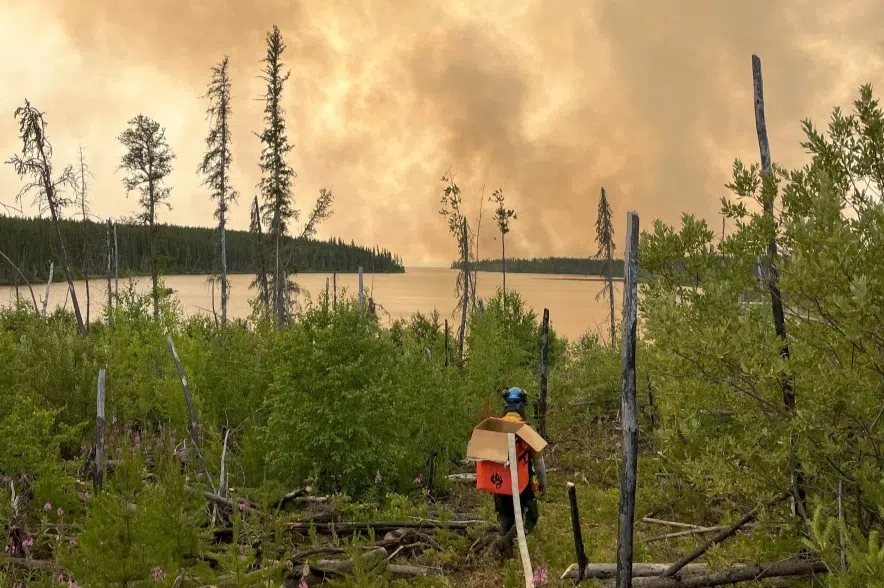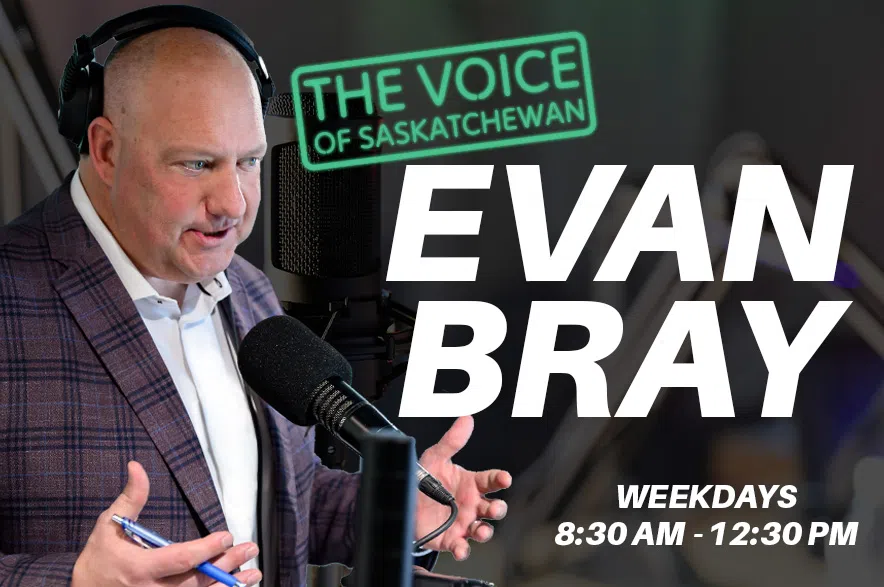While some evacuees get to return home, others are packing up to evacuate.
Beauval’s mandatory evacuation order will be lifted on July 30, according to the community’s Emergency Operations Committee (EOC). The local state of emergency, however, will remain in place until Aug. 6.
But residents in the Ramsey Bay area are still under a local emergency and evacuation order.
“Saskatchewan Parks, Culture and Sport, and Northern Municipal Services declared a local emergency and an evacuation order for the Resort Subdivision of Ramsey Bay and Ramsey Bay Campground on July 24, 2025. All residents are required to evacuate as soon as possible,” Parks Canada said in a release.
In the last week, the Buhl Fire has travelled 4.2 km closer to the Ramsey Bay area.
Read more:
- Beauval wildfire evacuees can head home on Wednesday
- Why the SPSA waited until now to call in the military for wildfire help
- ‘Getting married no matter what’: Wildfire won’t cancel wedding
According to the Saskatchewan Public Safety Agency’s (SPSA) website, 12 communities are currently under an evacuation order including the Resort Subdivision of Lac La Plonge, La Plonge Reserve, Northern Village of Beauval, Northern Hamlet of Jans Bay, Resort Subdivision of Ramsey Bay, Patuanak/English River First Nation, Montreal Lake Cree Nation, Northern Village of Pinehouse, Canoe Lake Cree First Nation/Canoe Narrows, Île-à-la-Crosse, Northern Hamlet of Cole Bay and Resort Subdivision of Little Amyot Lake.
Tips for evacuees returning home
In a release on Tuesday, the SPSA outlined some tips for those making the trip back home after being evacuated.
It advises people to wait for official clearance before re-entering the community and to watch for hazards such as debris, fallen trees or damaged roads.
It reminds people to stay 10 meters back from downed power lines.
It also warns people to be prepared for grief and loss.
When checking one’s home, it is recommended to have utilities inspected by a professional before turning them on, document all damages for insurance claims and to check for boil water advisories.
For a full list of the SPSA’s wildfire emergency planning fact sheet, visit their website.
Fires in Saskatchewan on July 29
As of 6:30 p.m. on Tuesday, 57 active wildfires burned in Saskatchewan.
Twelve of those blazes were not contained, with another 27 under ongoing assessment and firefighters were protecting values in another 15. Three fires were considered contained.
Contained means suppression action is taking place and the fire is not expected to grow in size, ongoing assessment means the fire is being monitored regularly to assess risk to values in the area and not contained means suppression action is taking place but the fire is expected to grow in size, according to SPSA. Protecting values means a fire is active and action is focused on protecting things like cabins and infrastructure.
Notable fires not contained included the Shoe Fire near Lower Fishing Lake, the Pisew Fire west of La Ronge, the Wolf Fire west of Denare Beach, the Ditch Fire north of Weyakwin, the Muskeg Fire north of La Plonge Indian Reserve and Beauval, the Buhl Fire West of Weyakwin, the Trail Fire west of Beauval and the Park Fire north of La Loche.
By far the biggest of those is the Shoe Fire, which was first reported on May 7 and on Tuesday was listed as 554,667 ha, or just over 1,370,612 acres, which is just larger than the entire City of Saskatoon area.
A fire ban remains in place due to the extreme fire risk. Fire bans are active in 18 urban municipalities, 26 rural municipalities and four provincial parks in the province.
The fire ban prohibits any open fires, controlled burns and fireworks within the designated boundary.
So far this year, there have been 405 wildfires in Saskatchewan. The five-year average is 330.












